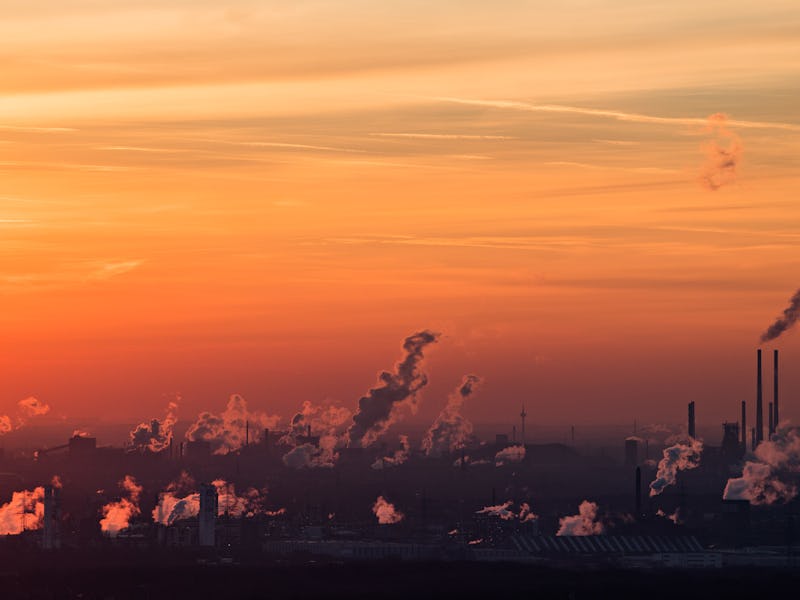A Carbon Law Could Save the World
We could be at net-zero emissions by the middle of the century.

Would a carbon law actually work? That is, a path to achieve net-zero carbon emissions by the middle of this century? A new proposal promises it would do just that, if we can stick to it.
The proposal, published Thursday in the journal Science, would put the heaviest burden of carbon reduction on the next ten years, with a goal of having emissions peak no later than 2020.
If implemented correctly, the authors say this carbon law plan will enable humanity to keep global warming below the critical threshold of 2 degrees Celsius (about 3.6 Fahrenheit). It’s not too late to save the planet after all.
“We need a global carbon roadmap”
“After the Paris Agreement, we started thinking, what does this outcome actually mean for the world?” co-author Owen Gaffney tells Inverse.
Gaffney says the next steps go like this: First, we need to draw up a “global carbon roadmap” that shows the steps to take in key areas of infrastructure.
Our gross carbon emissions are currently a colossal 40 metric gigatons per year. Under the proposed plan, this would decrease to 24 gigatons between 2020 and 2030. Then, from 2030 to 2040, down to 14 gigatons. We would be emitting just 5 gigatons by the year 2050.
To get there, Gaffney says we start with “no-brainers” like ending the subsidizing of fossil fuels and introducing a carbon tax to the tune of $50 per ton — a tax that would rise to $400 per ton by mid-century. (It’s worth considering here that Sweden has been doing this for years without any of the adverse economic effects that carbon-tax opponents fear.) The proposal is applicable at all levels and sectors of the economy, from agriculture to transportation to finance. The more carbon a party emits, the more work they have to do to stay on target.
“It puts the onus on those who are the worst polluters, so in that way, it’s reasonably equitable,” Gaffney says. “It sets a course anybody can follow … we’d like to see it adopted by organizations, by companies as a framing to guide themselves by. The IT sector has been very interested in this because it’s ambitious, it’s all about disruption and innovation.”
The next step the authors want to take is a roundtable with big names in Silicon valley this summer to discuss rapid expansion. The plan of roughly halving emissions with each successive decade actually works a lot like Moore’s Law, which is fitting since Gaffney cites Intel — whose co-founder Gordon Moore conceived of the eponymous law back in the 1960s — as one of the companies to show the most interest thus far.
At the moment, about half the CO2 we emit is absorbed by land and oceans (roughly 25 percent each), which is basically a free reduction service the planet is providing us. But as our emissions decrease, so will that level of natural carbon uptake, which could mean our cumulative emissions still grow. Think of it something like how your metabolism slows if you lose a significant amount of weight, forcing you to eat less to maintain the same size. This seems like one of the more significant challenges we’ll still need to overcome even if everyone does to their part and follow the reduction timeline. Still, Gaffney and his co-authors are optimistic that their plan is effective and actionable, and that it’s not too late to begin.
“The beauty of this model is that the pace is set not by the oil companies, the coal-mining companies, the gas giants who use their influence on governments to stall [reduction quotas],” Gaffney says. “This turns that logic around. It’s not set by them, it’s set by its own dynamic. It’s a new way of thinking about it.”